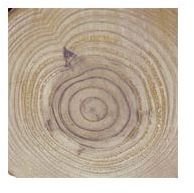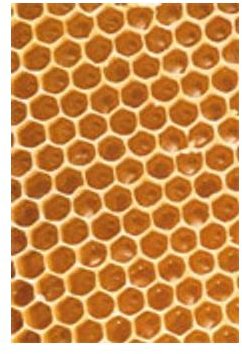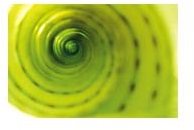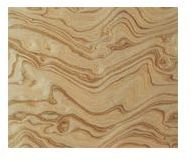Pattern Photography - A Technique to Enhance Your Digital Photography Skills
Most people like music. Though the choice of music varies from hard rock to mellifluous classical, there’ll be very few people who don’t appreciate music. Now, how does music relate to this article, you may wonder. I’ll come to that. Again, some songs are more ‘catchier’ than others; you feel like humming along in just a single listening. If you analyze these songs, you’ll find that more often than not, there’s a series of notes/beats which repeat itself over and over again, and form a recognizable pattern. That’s what rhythmic music is about. The human brain is wired to recognize patterns in whatever it sees, hears or feels, and immediately ‘connects’ when it recognizes that pattern. The closest analogue of rhythm in a still photograph is what’s called ‘patterns’. Without realizing it, you’ve probably shot some patterns yourself. Go back to your albums and pick out photos which ‘appeal’ to your senses, and you’ll mostly find some sort of a pattern in it. Read on to find how you can consciously incorporate patterns in your photographs, making them ‘rhythmic’ and make them sing your favourite tune!
What comprises a pattern?
If it occurs once, it’s incidental. If it occurs twice, it’s coincidental. If it occurs three times, it’s a pattern. Any visual element which repeats itself multiple times comprises a pattern. If you look around, you’ll find patterns are all around you. Patterns are in the clouds, the desert sand, your floral bed sheet, in leaves, in flower petals, in your footprints, in the cracked dry earth, in a herd of zebras, in the ripples on a lake…you get the idea! You just have to have a keen eye and you’ll spot patterns everywhere.

Patterns can be classified in four basic types
1. Lines
Vertical lines add drama to an image and give it life. Horizontal lines make the image peaceful and calm. Diagonal lines imply motion or action, and draw the eye from one end to the other. One can find variations of this theme too. If the lines are jagged, it arouses a sense of excitement, like a rough mountain peak, whereas rounded lines offer a feeling of ‘safety’. The shape of a ‘V’ leads our eye to the fulcrum of the ‘V’, whereas an ‘S’ makes our eye follow the shape around the frame. Another kind of pattern formed by lines is branching; like branches of a tree or veins of a leaf. One can use lines to draw the viewer’s eye to the main subject of the photo, or away from it.
2. Colours
Colours can form excellent patterns. They help evoke powerful emotions. Abstract photography with no fixed shape or pattern but a mix of myriad colours is an example. In nature, the morning and evening sky offers a beautiful palette of coloured patterns, as does a macro of a flower petal. A gradation of shades of the same colour also makes a striking colour pattern.
3. Shapes
Circles, spheres, helices, hexagons – nature offers us almost all the shapes we can think of. Circles are the symbol of the divine, and most heavenly objects like the sun, moon and planets are circular/spherical. A variation of the sphere is an explosion. One can commonly find this on inflorescences (for example, dandelion seeds). Helices are corkscrew-like shapes, common in vines and tendrils. Think of a telephone cord and you know what a helix looks like. Spirals are commonly found in growth patterns like rose petals, sea shells or even a spider’s web. Hexagons are exemplified by the honeycomb, though corn cobs or even microscopic photographs of many body tissues are hexagonal. A variation of this theme is cracked earth, which forms complex puzzle-like patterns.
4. Fractals
Fractals are the term used to explain order in natural occurrences which do not follow any fixed shape, for example, the branches of a tree. It’s a kind of ‘random’ pattern, in the sense it doesn’t follow any fixed rule, but yet we can still recognize there’s a pattern to it.
Photos with patterns








How To Photograph Patterns
1. Isolate it from its environment. This adds emphasis. The fence throwing its shadow in the evening sun might not make a good image when shot as such, but zooming in on the shadow creates a powerful pattern.
2. Use available objects to create a pattern. Zoom in or zoom out to locate patterns in common scenes. A market when seen at eye level may look mundane, but when shot from a terrace, it can form a beautiful pattern of various colours and shapes. A pine tree shot from its base pointing to the sky forms diagonal lines and gives a dramatic ‘growth’ effect.
3. Don’t have any preconceived notions. Nature has its own way of hiding things we come out searching for. Keep your mind free, and start looking for patterns in whatever lies in front of you. Change your point of view; sit down, lie down, climb up two storeys, use a tripod to set your camera to different angles, look all around you. If you find nothing, keep moving, keep looking around and start shooting. At first you may not be so successful, but once your eye gets tuned to identifying patterns, you’ll start finding them just about everywhere.
4. Experiment. Be unique. Use a macro lens to photograph the tiny, like a fly’s eye or the micro-texture of your wall. A good zoom lens is a valuable asset, as it helps fill the frame with even seemingly small patterns, giving them a totally new perspective.
Here are some more ideas of commonly found patterns – staircases, fences, nets or meshes, trees and foliage, spider webs, wood surface, windows and doors, flowers, ripples on a water surface, smoke swirls, sand, urban landscapes, pillars in a monument, bricks…the list is endless. Try your hand at it and you’ll be hooked forever!
Photos with patterns



